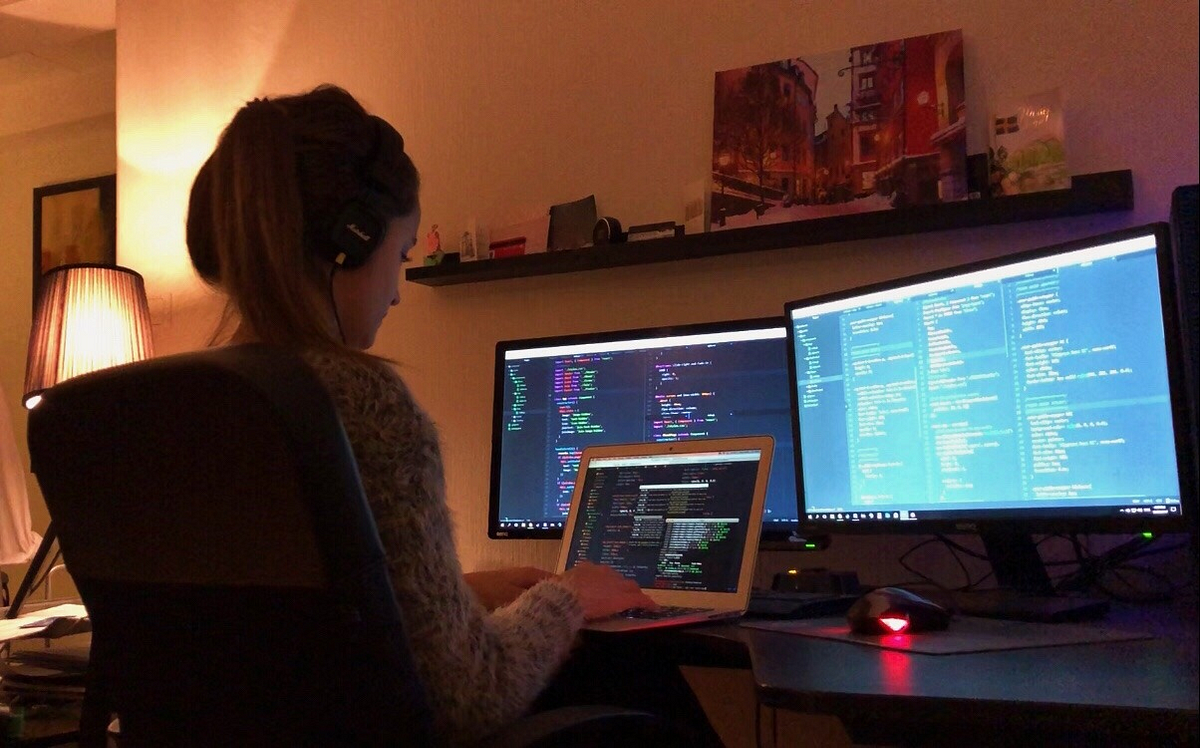Dedicated Developers vs. In-House Teams: Which Is Right for You?
The choice in between using devoted designers and preserving an in-house group is a substantial one that can impact the trajectory of your projects and total service strategy. Conversely, internal groups add to a natural firm society and a nuanced understanding of lasting goals.
Comprehending Committed Designers
The expanding need for specialized skills in the technology industry has actually resulted in the introduction of devoted designers as a practical service for numerous organizations. These specialists are usually contracted on a task basis, enabling firms to take advantage of details proficiency without the lasting commitment connected with permanent hires. Devoted designers are frequently ingrained within a client's team, giving versatility and scalability to fulfill job requirements.
This design permits companies to access a global talent swimming pool, which is specifically beneficial in a swiftly evolving technological landscape. Devoted programmers can be sourced from various geographical places, making certain that companies can discover the ideal ability set at competitive rates. They usually bring a wide range of experience and expertise, having worked with diverse projects throughout different industries.
In addition, committed designers can concentrate specifically on the jobs at hand, boosting performance and effectiveness. They are outfitted to incorporate effortlessly into existing operations, teaming up very closely with internal teams to achieve project objectives. This approach not just minimizes the worry of recruitment and training but additionally enables organizations to remain active, adjusting rapidly to changing market demands and technical developments.
Benefits of In-House Teams

Moreover, internal teams often tend to have a much deeper understanding of the company's objective, worths, and objectives. This placement can improve employee engagement and inspiration, as employee feel much more attached to their job and the organization's success. Furthermore, having a committed in-house team enables for far better alignment of approaches and objectives, as these members are continually concentrated on the company's top priorities.
In-house teams likewise promote quicker decision-making processes, as they can respond much more quickly to obstacles and modifications. The established connections and experience with business procedures enable structured operations and minimized miscommunication. Inevitably, the mix of a natural culture, positioning with organizational goals, and effective communication makes internal teams a beneficial asset for several companies, particularly those aiming to grow lasting growth and technology.
Cost Considerations
When examining cost factors to consider, both dedicated programmers and internal groups existing distinctive economic implications for organizations. Involving devoted programmers usually entails a pay-per-project or per hour rate Read More Here design, which can be cost-effective for companies with varying job needs. This strategy enables versatility Continued in scaling sources up or down, guaranteeing that firms only pay for the solutions they require.
On the other hand, in-house groups involve dealt with expenses, consisting of incomes, benefits, and overhead expenditures such as workplace and equipment. While this design provides greater control and instant availability of sources, it may cause greater long-lasting costs, specifically if the workload does not warrant a permanent staff.
Moreover, firms need to consider the surprise prices connected with recruitment and training of internal staff members, which can additionally stress budgets. In many cases, the time and resources invested in handling an in-house team can interfere with the company's core company goals.

Task Management and Flexibility
Job administration and versatility are crucial factors that influence the selection between internal teams and committed programmers. Committed teams commonly have actually established procedures for handling jobs effectively, leveraging details methodologies like Agile or Scrum, which assist in repetitive development and adaptability.

Eventually, the selection between specialized designers and in-house groups rests on the preferred level of adaptability and the specific task management requirements. Firms need to assess their operational dynamics, task complexity, and source accessibility to identify which alternative aligns finest with their strategic objectives.
Making the Right Selection
Selecting the ideal development strategy-- committed developers or internal teams-- calls for a careful assessment of different factors that align with a company's calculated goals. On the other hand, internal teams can give better connection and integration with navigate here existing workers.
Next, evaluate your spending plan. Committed designers frequently offer a cost-efficient remedy for temporary jobs, while in-house groups may incur greater long-lasting expenditures due to wages, advantages, and overhead expenses. Evaluate the degree of control and collaboration wanted; internal groups generally promote more powerful communication and positioning with business culture.
If immediate results are required, devoted designers can be onboarded swiftly, whereas developing an internal team takes time for employment and training. If constant growth is important, spending in an internal team might generate far better returns over time.
Final Thought
Finally, the choice in between committed designers and in-house teams pivots on task requirements and business goals. Devoted designers give flexibility and specific know-how, making them ideal for short-term initiatives. Alternatively, internal groups cultivate a cohesive society and much deeper positioning with lasting objectives. Mindful examination of budget plan restrictions, task timelines, and preferred control levels is important for identifying one of the most ideal technique, making sure alignment with calculated top priorities and operational efficiency.
The decision in between using devoted programmers and keeping an in-house team is a substantial one that can influence the trajectory of your jobs and overall service technique.Task monitoring and versatility are crucial variables that influence the choice between internal groups and devoted programmers. software development partner.In contrast, in-house groups might succeed in preserving a regular project administration structure due to their knowledge with the company's culture and long-lasting goals. Committed developers frequently offer an economical service for temporary tasks, while in-house groups may incur greater lasting costs due to wages, benefits, and overhead costs.In conclusion, the decision between internal groups and dedicated designers pivots on task requirements and business goals
Comments on “Discovering the Perfect Software Development Partner for Innovative Solutions”